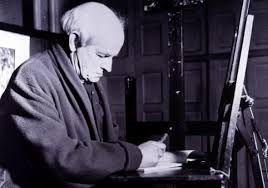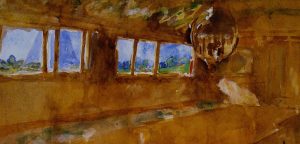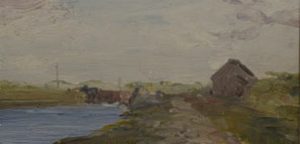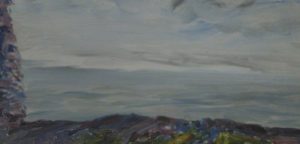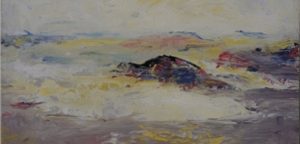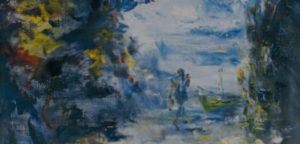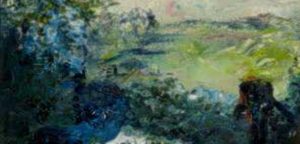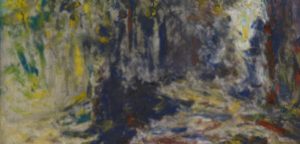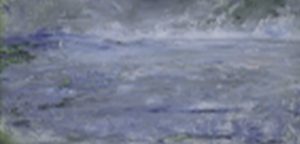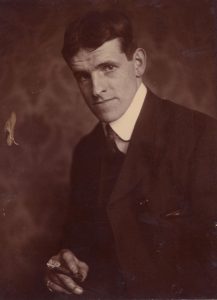Jack Yeats was born on the 29th of August in 1871 in London, Great Britain.
1871 - 1957
Jack Yeats
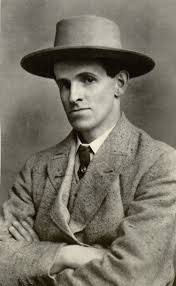
description
An Irish artist and writer, considered the biggest English painter of the XX century.
Jack Butler Yeats was the youngest son of a painter John Butler Yeats.
His elder brother William became a poet and Nobel laureate. The childhood of the future artist passed on the East of Ireland in the county of Sligo. He learnt the basics of fine arts from his father.
During his lifetime, Jack Yeats was recognized and famous as a master of landscape and plot painting, a book illustrator, creator of graphics, including caricature. The most amazing fact of his biography may be considered his victory at Olympic games in France in 1924, when painting, like sculpture and architecture, was an Olympic category. J. Yeats remains a popular master – in 2011, the painting “A Just Day. Mayo” (1925) was sold for one million euros.
Key ideas:
– The early paintings of Jack Yeats were created under the influence of paintings of French Impressionists, while he used very little oil, preferring watercolor for his landscapes and figurative compositions on the themes of West Ireland. Nevertheless, in 1899, these works were exhibited at the Royal Hibernian Academy (RHA).
– Around 1920, he developed a more personal expressionistic style, distinguished by a bright color and an extremely friable manner of applying oil paints.
– Sympathetic to the movement of Irish Republicans, but not much involved in their activities, the artist created emotional images of the urban and rural life of Ireland. His favorite themes remained landscapes; also the interest of the master extended to the subjects of Celtic mythology. Those scenes, like everything else were painted in the style much far from the traditional academic fine art. At the same time, his canvases became brighter; the painting technique changed as well – the paints were applied very thickly, often with the help of instruments, and not only brushes. The brushstrokes of the artist became free and decisive, like if he gave a right to his emotions to come on the canvas.
– Despite the “friability” of the painting, it conveys the artist’s expression to the viewer. Especially it concerns genre paintings with the images of circuses, horse races, music concert halls, celebrations and fights. An example of this might be the painting “A small ring” (1930), created in an Expressionist manner, which Yeats learnt at the end of the 1920s. The plot shows a young boxer defeating his opponent, and the crowd, depicted with energetic strokes, is confused by the surprise and shrinks around him.
– In the last two decades, being already a master, Jack Yeats continued to work with even greater energy and created a significant number of works (approximately as in the previous three decades). As it happens with many great artists, he could leave whole areas of his canvases empty, filling them with expertly painted strokes. In the last period, such delightful masterpieces as “Silent lands” (1951), “Glory” (1952) and others.
– Jack Yeats believed that “an artist should be a part of the land and life, which he depicts”, and his own artistic development, especially as Expressionist, helped form the art of Dublin of the 20th century and the entire culture of Ireland.
1871
1890
1894
1900
1916 - 1917
1924
1942
1947
1948
1957
The birth of the artist
Studied at the Westminster School of Arts
Studied at the Westminster School of Arts under the direction of Frederick Brown. Then he worked as a cartoonist, graphic artist at various magazines, illustrated books, in particular, created the first animated series “Sherlock Holmes”.
Having left London, lived 14 years in Devon
Married Mary Cottenham. Having left London, lived 14 years in Devon before moving to his historical motherland – first to Graystones, Wicklow County, and then to Dublin. In painting, he mostly worked with watercolor in the style of French Impressionists; he saw their paintings, in particular, in the collection of art-dealer and art expert sir Hugh Lane.
Started presenting his paintings at The Royal Hibernian Academy
Started presenting his paintings at The Royal Hibernian Academy, began to practice oil painting; the plots mostly were the landscapes of Western Ireland. In 1905, the artist accompanied writer John Millington Synge in a walking tour around the Mayo region in Western Ireland. Sketches made at that time served as the basis for different paintings.
Was elected a member of The Royal Hibernian Academy
Was elected a member of The Royal Hibernian Academy (RHA, the Irish department of the Royal London Academy): settled down with his family in the capital of Ireland forever and after 2-3 years started creating Expressionist paintings. His pictures became brighter – the artist that sympathized the idea of national renaissance searched for the plots for the genre scenes of the life of his country, used Celtic mythology.
He was awarded a silver medal for painting at the summer Olympic games in Paris
He was awarded a silver medal for painting at the summer Olympic games in Paris (1924) for his painting “Swimming Liffey” (art competitions were a part of the Olympic program from 1912 to 1948).
The big personal retrospective exhibition
A big personal retrospective exhibition of his works was held at the National gallery in London. The same exhibition was also held three years later at the Irish national gallery.
The artist was depressed the death of his wife
The artist was depressed the death of his wife. His palette became darker.
An exhibition of his paintings was held at the popular Tate Gallery
An exhibition of his paintings was held at the popular Tate Gallery. He presented the masterpieces of the last few years, such as “Little Sisters” (1944), “Over the fair” (1946), “Sea and a lighthouse”, “Freedom” (1947), etc. Collaborated with the Abby Theater, which showed three of his plays.
The death
He passed away on the 28th of March in 1957 in Dublin, Ireland.

